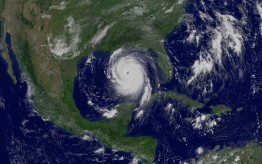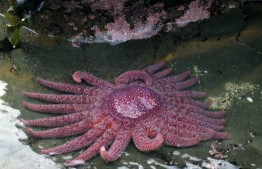As a journalist, Jed Horne is after the truth. During his time as the city editor at The Times-Picayune in New Orleans, he spent a great deal of time examining the truth in order to tell authentic stories. Before and after Hurricane Katrina arrived at the city’s doorstep, the truth—especially what was conveyed to national and international audiences—was muddled. Horne set out to set the record straight.
Read more »Student collaboration leads to first results describing sick sea star immune response
Though millions of sea stars along the West Coast have perished in the past several years from an apparent wasting disease, scientists still don’t know why. The iconic marine creature develops white lesions on its limbs and within days can dissolve or “melt” into a gooey mass. Last year, researchers identified a type of pathogen known as a densovirus as the likely cause, but they still can’t explain the mass die-off three years ago or why a common ocean virus can wreak havoc on so many starfish species from Alaska to Southern California.
Read more at UW Today »Dean's Letter: Inclusion Inspires Innovation
It is well established that innovations arise when different perspectives are brought to bear on seemingly intractable problems. Simply Google innovation, diversity, and inclusion. You will find research supporting this claim in the Harvard Business Review, calls to action in Forbes, and the sound bite from Apple that I took for the title of this Dean’s Letter. In environmental sciences and resource management, inclusion doesn’t just inspire innovation—it changes everything.
Read more »Simulating path of ‘magma mush’ inside an active volcano
Months of warning signs from Mauna Loa, on Hawaii’s Big Island, prompted the U.S. Geological Survey to recently start releasing weekly updates on activity at the world’s largest active volcano. For now, such warning signs can only rely on external clues, like earthquakes and gas emissions. But a University of Washington simulation has managed to demonstrate what’s happening deep inside the volcano.
Read more at UW Today »Welcome to the College's newest faculty members
Four outstanding new faculty members with a wide range of experiences and expertise have recently started at UW’s College of the Environment. The College community—its undergraduate and graduate students, faculty, and staff—will benefit immensely from their contributions during the 2015-2016 academic year and beyond.
Read more »





